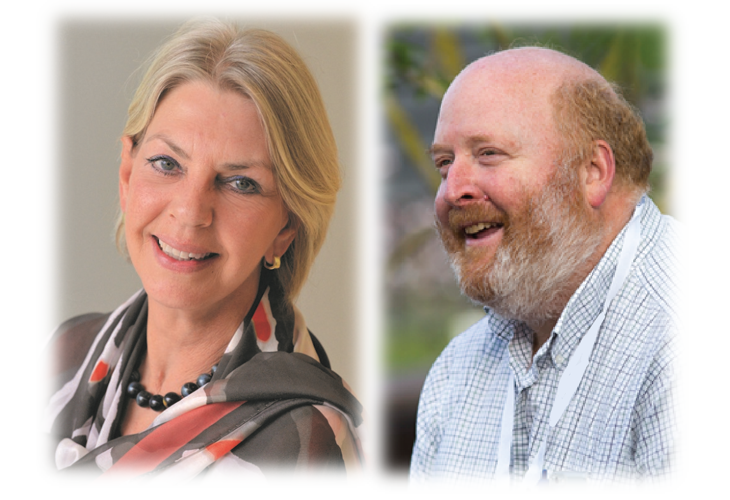Fostering a Multidisciplinary Collaboration in the Workplace
We all hear the phrase, “it takes a village” or “team work makes the dream work” but what does that really look like in the workplace. ISMRM President, Pia C. Maly Sundgren, M.D., Ph.D., and Vice President, Lawrence L. Wald, Ph.D., will gives us some insight on what good collaboration is and why it is so important. What are the key elements to fostering a culture of cross-department or multidisciplinary collaboration and how will this help with outcomes?
How important is it to have cross-department collaboration? What effect does it have on your work?
Pia: To have cross–departmental collaboration is fundamental for me as a researcher and a practicing neuroradiologist. For me collaboration is two-folded: collaboration with my clinical colleagues from other disciplines, and equally important the collaboration with the MR physicists, engineers, and computer science colleagues. To have a close collaboration with clinical colleagues in different disciplines related to my research is important for brainstorming, research ideas, and to establish a close and productive research team. The latter is crucial to facilitate the recruitment of patients, helps to obtain all necessary clinical information, share costs of a research nurse, recruit clinical Ph.D. students among things. The collaboration with MR physicists and MR nurses are fundamental to be able to implement the ideas, scan the patients and to have access to the latest developments in imaging, sequences, etc.
Larry: I agree that it’s central to our role. From the point of view of an MR physicist/engineer working on methodology, it’s important to always keep the end goal in mind. For engineers, your work is measured by your success in solving a problem that people care about. Some medical problems are widely known, but many are nuanced and visible only to the practitioners who face them daily. Basic scientists have a little more leeway for unguided exploring, but I would argue that even there, the work’s importance will be judged by how it better understands biological function and dysfunction surrounding important issues in human health. I also underscore Pia’s point that Radiology itself is a collaborative discipline. Therefore we find ourselves working with all subfields of the medical system; the medical specialties, but also aspects of administration/delivery and health-care economics.
Where did you learn how to implement this collaboration practice?
Pia: It has been a long tradition in Lund where I work. Especially the close collaboration between the neuroradiologists and the MR physics group and its Ph.D. students at the Department of Medical Physics, at Lund University. In addition, The Center for Imaging and Function, Skåne University hospital has several MR physicist employed and present at the department. They not only supervise the MR scanners but are actively helping internal and external researchers as well as have their own dedicated time for their own MR research (when not eaten up by daily routine and support to others).
Larry: I was fortunate to get my introduction to how to do this at UCSF, which has one of the closest research/clinical relationships that I have seen. My professional home for the last 20 years (the A.A. Martinos Center at MGH) consists of a mixture of Ph.D.’s and MD’s so seamlessly mixed that sometimes I forget who has what background.
What are some of the key elements that can create great collaboration outcomes?
Pia: Have an open mind, brainstorm and talk, respect the knowledge in the group, skip hierarchic behavior, acknowledge collaborators, be inclusive, integrate in the daily work. Physical presence in the same office/work area. Have regular meetings to discuss projects, outcomes, grant funding and new ideas.
Larry: The above, plus I would additionally underscore the value of engineers and scientists spending some time to observe clinical practice first-hand.
Who do you collaborate with and why is their input important to you and the field?
Pia: I closely collaborate with several of our members in the MR Physics group in Lund and MR engineers as well as I have a good relationship with the MR nurses. I often discuss projects and ideas with all of them. It is important to discuss potential benefits of the new sequences; new post-processing algorithms and what can be durable in a clinical setting. Especially as my research is primarily clinical, disease-oriented and includes patients. To bring specific disease-oriented questions to the table with the aim to further develop the MR technique and to be able to answer these questions.
Larry: Being brain-focused, I find value in keeping contact with our neuro-radiology division, but also broadly; neurologists, psychiatrists, neonatologists and oncologists. And as someone who hopes to have our methods enter practice, it’s vital to interact with the front-line of those who use them; MR technologists (radiographers).
What advice would you give to someone trying to change a culture towards better collaboration?
Pia: Invite all those that you would like to collaborate with for Round-the-Table discussions and try to focus on things that join or potentially can join rather than things that split. Highlight other research facilities with known strong cross-departmental collaboration and present what they have gained and what they have done to make them strong. If you can afford maybe take a group and visit a facility like that to discuss or invite representatives from other research facilities to discuss how they work.
Larry: I think the enemy is our over-burdened schedules. It’s easy to let these interactions get displaced from your schedule; don’t let it. You will see a lot of collaboration and information sharing at the upcoming annual meeting in Montréal. Having all of these great minds in one place will start many collaborative conversations in which you can take back home with you and continue.





